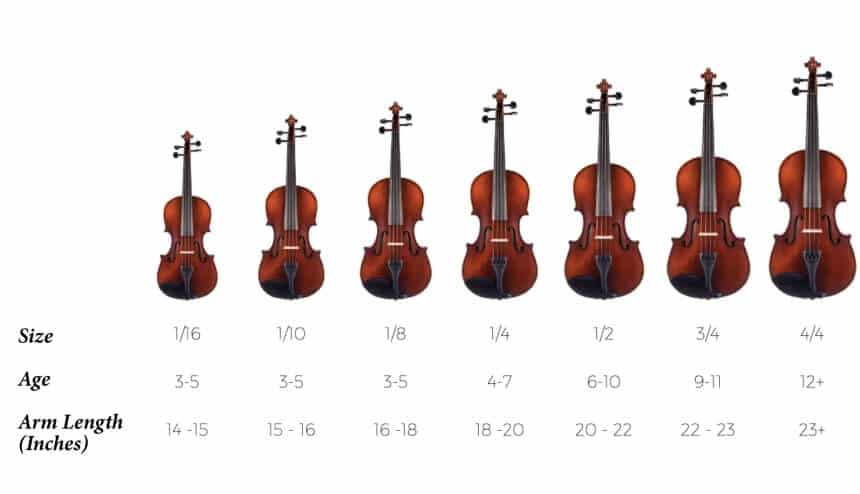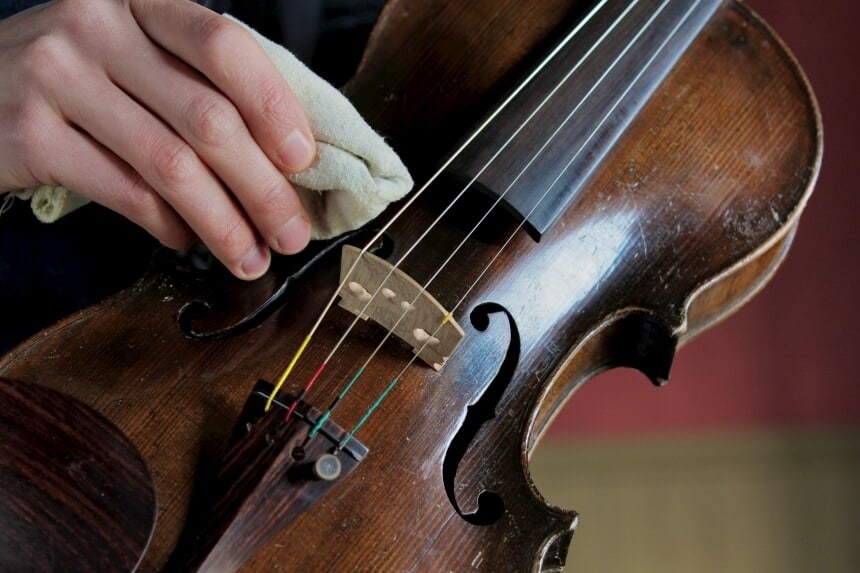It’s the best time ever to learn an instrument. We’re not saying that it is easy to learn how to play, but if you are looking into how to learn violin by yourself then there are so many resources out there for you. There are also a lot of online communities that will be able to help you.
Violin is a truly impressive instrument to play. If you are looking to impress your friends then a string instrument like this is ideal. Plus, you can form the basis for playing other instruments too if you plan to become a full virtuoso. You’re in for a challenge, but if you are looking to learn how to play the violin then we have some top tips for you, as well as some resources you should definitely check out.
Before you get started, there are some things you should know about this impressive instrument. A lot of people have questions about learning the violin, you might not have even decided if the instrument is ideal for you. You might want to know how hard it is to learn to play the violin, or whether you can learn violin fast, before you buy an instrument and commit to getting started.
 Anybody that tells you that it is easy to learn to play the violin is lying. There are some courses that will promise you will learn how to play the violin in weeks. This is probably a sales ploy. It isn’t easy to learn all of the techniques involved with playing the violin.
Anybody that tells you that it is easy to learn to play the violin is lying. There are some courses that will promise you will learn how to play the violin in weeks. This is probably a sales ploy. It isn’t easy to learn all of the techniques involved with playing the violin.
Playing the violin will always provide a challenge. If you want to reach a professional level then you will have to practice all the time in order to keep your skills sharp.
Some of the things that people find really difficult when they are getting started include bowing.
Bow technique is incredibly hard, and even if you get it slightly wrong then it can make a big impact on the sound. It requires a lot of muscle memory. Even the posture you need to stand in can be pretty difficult.
Compare this to playing the piano, where you can hit a few notes and they will sound good almost instantly. The fact that you have to learn the technique to actually generate sound out of your instrument means that violinists have an extra challenge presented to them.
Another thing that makes it hard for people to learn how to play is the lack of frets. Violin is a fretless instrument. You have to be able to control the pitch of the instrument without the help of frets to help you to work out where you are. This involves skill, technique, and memory. This sort of thing will only be learned by putting in the hours…
If you are looking to learn violin by yourself then you need to know that it is going to take you a while to get to grips with it. The answer on how long it takes to learn the instrument varies. Obviously, the more time and effort you put in, the quicker the progress is likely to be.
Even if you go through a full course of online lessons quickly, you will probably not be able to play to a high standard, and though within 5 or 6 months you will be able to play some basic tools, you shouldn’t expect to be playing at a high level for a few years. After three years it is possible that you will reach a good level of ability, especially if you have kept up with a rigorous practice schedule.
Learning how to play a few simple tunes will be much quicker, so you might have something to show for your practice. If you are wondering how to learn vibrato violin, or more ambitious bowing techniques, it might take a bit longer.
 There are a couple of common errors that we see time and time again when people are trying to choose their very first violin. They tend to either spend too little, and get a low-quality product that simply isn’t reliable enough, and doesn’t provide a solid tone to build on. Alternatively, people might jump in and spend a fortune on an instrument, only to discover that the hobby is not for them and that they have spent way more than they needed to.
There are a couple of common errors that we see time and time again when people are trying to choose their very first violin. They tend to either spend too little, and get a low-quality product that simply isn’t reliable enough, and doesn’t provide a solid tone to build on. Alternatively, people might jump in and spend a fortune on an instrument, only to discover that the hobby is not for them and that they have spent way more than they needed to.
As we explore in our guide to buying beginner violins, it is vital to get the right size Trusted Source Violin - Wikipedia Apart from the standard, full (4⁄4) size, violins are also made in so-called fractional sizes of 7⁄8, 3⁄4, 1⁄2, 1⁄4, 1⁄8, 1⁄10, 1⁄16, 1⁄32 and even 1⁄64. These smaller instruments are commonly used by young players, whose fingers are not long enough to reach the correct positions on full-sized instruments. en.wikipedia.org . As an adult, you will probably be best off going for a full-size violin, but it is possible that this might not be the best option for a child, and it can seriously hinder their learning as the violin will be too big, and won’t sit properly on their shoulder.
We recommend this violin by Cecilio as a reliable pick that doesn’t break the bank, perfect for beginners.
Your instrument is crucial to your journey, and can impact whether you are likely to stick with your hobby or not, so choose very carefully.
 When you start to learn how to play the violin, for beginners, one of the biggest challenges is to understand how you should look after your violin. If not, it can get warped or damaged, and you may have to pay for repairs or even to replace the violin. In many respects, violin care is one of the most important things to consider when you start to learn the instrument.
When you start to learn how to play the violin, for beginners, one of the biggest challenges is to understand how you should look after your violin. If not, it can get warped or damaged, and you may have to pay for repairs or even to replace the violin. In many respects, violin care is one of the most important things to consider when you start to learn the instrument.
There are some simple steps to use when caring for your violin:
Even if you buy a cheaper instrument, that doesn’t mean it is “throwaway”. You should take good care of it, and you can get many years of use out of a violin.
Learning how to play violin by yourself is all about the learning materials you use. 10-20 years ago, though there were good books and DVDs for beginners, it was much harder to find learning materials. What’s more, if you had questions, you might have a hard time finding answers without a teacher. Now, Google (and other search engines) are full of information so you can find out the information you need to know in seconds and choose whether to watch a YouTube video or to read an article to solve your problems.
Here are some more top tips for how to learn violin:
Challenge yourself daily. Don’t just stick with pieces that you already know. They might be fun to play, but without challenging yourself you’re never really making any progress. Play pieces you know you struggle with in order to give yourself the chance to grow and learn.
Try to mix with other musicians (even better if they play violin, too). By mixing with other musicians, you can ensure that you have a network for feedback and for inspiration. You might jam together or learn songs together, and you’ll find this much easier than playing on your own all the time.
Watch the best musicians. YouTube is a great solution for this, along with online violin lessons, which can show you how to improve your technique. Learning by watching is an effective solution.
Keep yourself motivated. We can’t stress this enough. If you are going to learn how to play the violin on your own then it is crucial that you stay motivated, whatever that means for you. What are your reasons for learning how to play? Keep these fixed in your mind and find the time to practice. If you are not motivated then the answer to “how long does it take to learn the violin?” will be “forever”.
If you are taking up any instrument then it is going to be a challenge.
You need to get the right learning materials to show you how to learn violin in a step-by-step way, rather than just diving in and hoping for the best. The violin is such an expressive instrument that gives you a great deal of stylistic possibilities once you have learned, but be prepared for a long road ahead when you take up this instrument. Fortunately, there are so many courses, books, DVDs and online lessons to get you started and you don’t necessarily need a teacher.